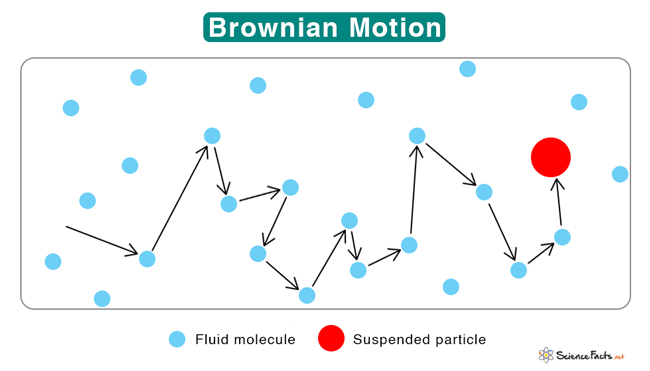Brownian motion is named after Scottish botanist Robert Brown, who first described the phenomenon in 1827. However, it was not until 1905 that Albert Einstein explained the theory in his publication on pollen movement in a liquid assisted by the liquid molecules. In 1908, French physicist Jean Perrin experimentally verified Einstein’s hypothesis, leading to the 1926 Nobel Prize in Physics.
Examples
Characteristics of Brownian Motion
